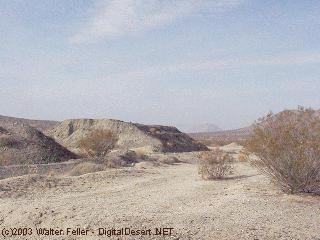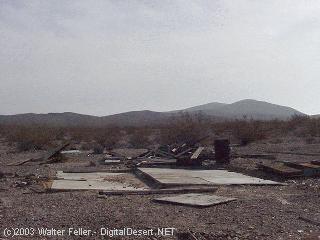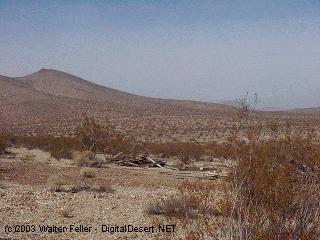San Bernardino County:
Goldstone
Gold was reportedly discovered at Goldstone as early as the 1880s. During the late summer of 1910, a well was being sunk by G. W. Toennies and a Mr. Goodrich for San Bernardino County at Goldstone. The well was sunk to 260 feet, when it bottomed in granite, with finding water. Several people were involved in mining during this same time, including John Harper and Goodrich.One of the most active mines before the 1916 gold rush here was the Big Drumm Mine discovered by J. L. Drumm on March 17, 1910. In November, 1910, it was planned that a 50 foot shaft would be sunk on this property, and by December, a ton of rich ore was brought into Barstow. In February, 1911, John S. Cook, a former Goldfield banker, bonded the mine, had 2 men working the mine for a week, then dropped the bond. At the Drumm Mine, in November, 1913, there was a small stamp mill.
Things did not really begin to stir in Goldstone until October, 1915. About October 15, 1915, gold was discovered on the Redfield claim that ran from $1,400 to $3,000 per ton in gold. Soon, this young camp was attracting many prospectors. By March, 1916, the camp had grown to over 150 men. In addition, there was a lodging house, daily delivery of mail and supplies, and for $5, one could obtain a round trip ticket from Barstow to the nearby camp. Mr. Belander, of Los Angeles, began construction of a custom mill at Seeber Well (the source of water for the camp) 3 miles to the south. In May, it was reported: "There are now nine buildings and ten houses at the site. The rooming house has been fitted up with 25 new sanitary spring beds and the restaurant, a separate building, is fully equipped to care for one hundred or more daily guests." 291
Work continued full blast at the camp that fall and winter at Goldstone Mining Company mines, the Redbridge as well as others, although the Big Drumm did not get under way again until January, 1917. Almost all of the mining was done by leasing portions of the claims, a practice that had been carried out with success at Goldfield, Nevada. By February, 1917, there was a mill operating, probably at the Goldstone Mining Company. On March 15, 1917, a post office named Goldbridge had finally been established, and there was talk of connecting the camp with Barstow by telephone. The reason for Goldstone's sudden decline in late summer or early fall of 1917 may never be known (for one thing, the Barstow newspapers are missing for this period), but by November, 1917, there were only 3 or 4 miners left in town. Goldstone was one of the last of a series of boomtown gold rushes that began about 1906 with the discovery of Goldfield, Nevada. The post office of Goldbridge officially closed August 15, 1918. 292
In 1934, some dry placering was going on at Goldstone. Then, during the late 1930s, the Belmont Mine began operations again on a large scale and installed a mill. Mining never really ceased altogether. In 1924, the Goldstone Mine had a blacksmith shop, assay office and one other building. A bunk house stood in 1973, but by November 1978, this had collapsed. In November there was a maintained cabin not far from the ruins of the bunk house. Two unoccupied structures have survived and the seemingly occupied Goldstone Mine and Belmont Camp looked well maintained. A handful of other structures still stand within a radius of about 3 miles of Goldstone. 293
Addition:
p. 156, paragraph 3
According to the Pacific Miner there was a substantial rush to Goldstone in May, 1910:
"Gold Stone is the name of a new camp, thirty-five miles north of Barstow, where some phenomenal ore has been found. Quite a stampede followed the discovery. Reports show that it is the richest locality in the Southwest. Development shows that lower workings show greater values than the surface indications. This has been demonstrated by Thomas B. Blackburn and associates, who are down 200 feet on one of the Old Betsie Claims, adjoining the claims of Henry Hart, where the first recent strike was made. The Old Betsie claims were first developed about January, 1909, by Mr. Blackburn, an engineer who has operated extensively in Utah and Colorado."
Goldstone Ghost Town


